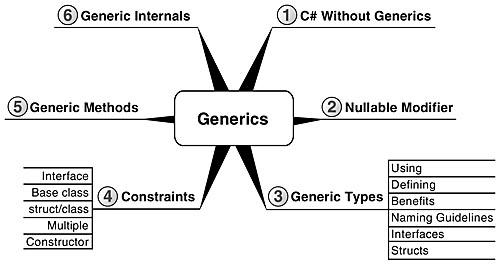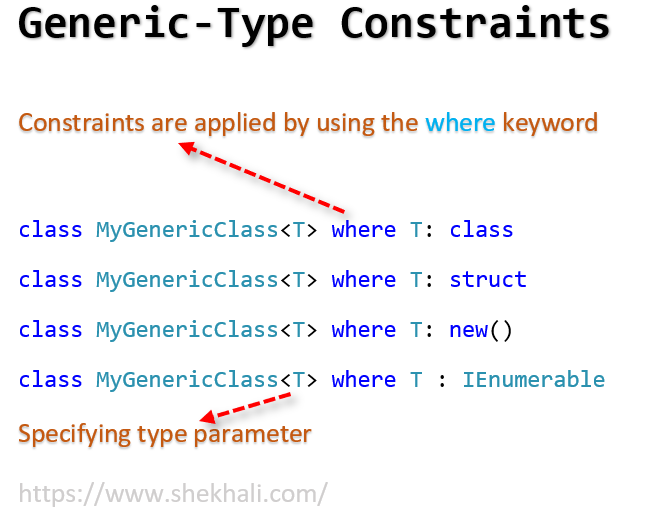Generics
Generics
Generics in C# are a powerful feature that allows you to define type-safe data structures, without committing to actual data types. Generics lead to more reusable, efficient, and type-safe code.
Why Generics?
Generics were added to provide a mechanism for defining and using generic types. Before generics, you could write a method that takes an object, but then you lose type safety, or you could write a separate method for each type you want to handle, but that leads to a lot of duplicate code.
With generics, you can write a single method that can handle different types in a type-safe manner.
Defining and Using Generic Types
Here's an example of how to define a generic class:
In this example, T is a type parameter. You can use T as a type in the MyGenericClass class, and when you create an instance of MyGenericClass, you replace T with an actual type:
MyGenericClass<int> myClass = new MyGenericClass<int>(10);
int value = myClass.GenericMethod(5); // Outputs "Parameter type: System.Int32, parameter value: 5, member value: 10"
Generic Constraints
C# allows you to limit the types that can be used with a generic class or method. These are known as generic constraints.
Here's an example of a generic class with a constraint:
In this example, the where T : IComparable constraint means that T must be a type that implements the IComparable interface.
For video tutorials on generics in C#:



